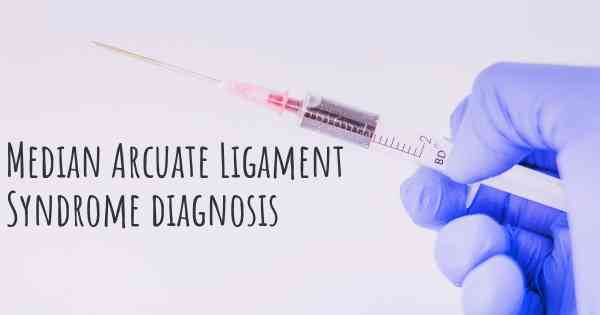How is Median Arcuate Ligament Syndrome diagnosed?
See how Median Arcuate Ligament Syndrome is diagnosed. Which specialists are essential to meet, what tests are needed and other useful information for the diagnosis of Median Arcuate Ligament Syndrome

Diagnosis of Median Arcuate Ligament Syndrome
Median Arcuate Ligament Syndrome (MALS), also known as celiac artery compression syndrome, is a rare condition characterized by the compression of the celiac artery by the median arcuate ligament. This compression can lead to a variety of symptoms, including abdominal pain, weight loss, and digestive issues. Diagnosing MALS can be challenging due to its nonspecific symptoms, but several diagnostic tests can help confirm the presence of this condition.
Medical History and Physical Examination
During the initial evaluation, the healthcare provider will take a detailed medical history and perform a physical examination. They will inquire about the patient's symptoms, their duration, and any factors that worsen or alleviate the pain. The physical examination may involve palpation of the abdomen to identify any areas of tenderness or abnormal masses.
Imaging Studies
Imaging studies play a crucial role in diagnosing MALS. The following tests are commonly used:
- Ultrasound: This non-invasive imaging technique uses sound waves to create images of the abdominal organs. Ultrasound can help identify any anatomical abnormalities, such as compression of the celiac artery.
- Computed Tomography (CT) Scan: A CT scan provides detailed cross-sectional images of the abdomen. It can help visualize the celiac artery and detect any compression or narrowing caused by the median arcuate ligament.
- Magnetic Resonance Angiography (MRA): MRA uses magnetic fields and radio waves to create images of blood vessels. It can provide information about the blood flow through the celiac artery and identify any abnormalities.
Angiography
Angiography is an invasive procedure that involves injecting a contrast dye into the blood vessels to visualize their structure and blood flow. It is considered the gold standard for diagnosing MALS. During angiography, a catheter is inserted into a blood vessel, usually in the groin, and guided to the celiac artery. The contrast dye is then injected, and X-ray images are taken to assess the blood flow and identify any compression or narrowing of the celiac artery.
Other Tests
In some cases, additional tests may be performed to rule out other potential causes of abdominal pain and confirm the diagnosis of MALS. These tests may include:
- Blood tests: Blood tests can help evaluate liver function, pancreatic enzymes, and rule out other conditions that may cause similar symptoms.
- Gastric emptying study: This test measures the rate at which food empties from the stomach. Delayed gastric emptying can be a symptom of MALS.
- Upper endoscopy: This procedure involves inserting a flexible tube with a camera into the esophagus and stomach to visualize any abnormalities or inflammation.
Collaboration with Specialists
Diagnosing MALS often requires collaboration between different specialists, including gastroenterologists, vascular surgeons, and radiologists. They work together to interpret the results of various tests and determine the most appropriate treatment plan for the patient.
In conclusion, diagnosing Median Arcuate Ligament Syndrome involves a combination of medical history, physical examination, and various imaging tests. These tests help identify the compression of the celiac artery and rule out other potential causes of abdominal pain. Collaboration between specialists is crucial to ensure an accurate diagnosis and provide appropriate treatment for individuals with MALS.








